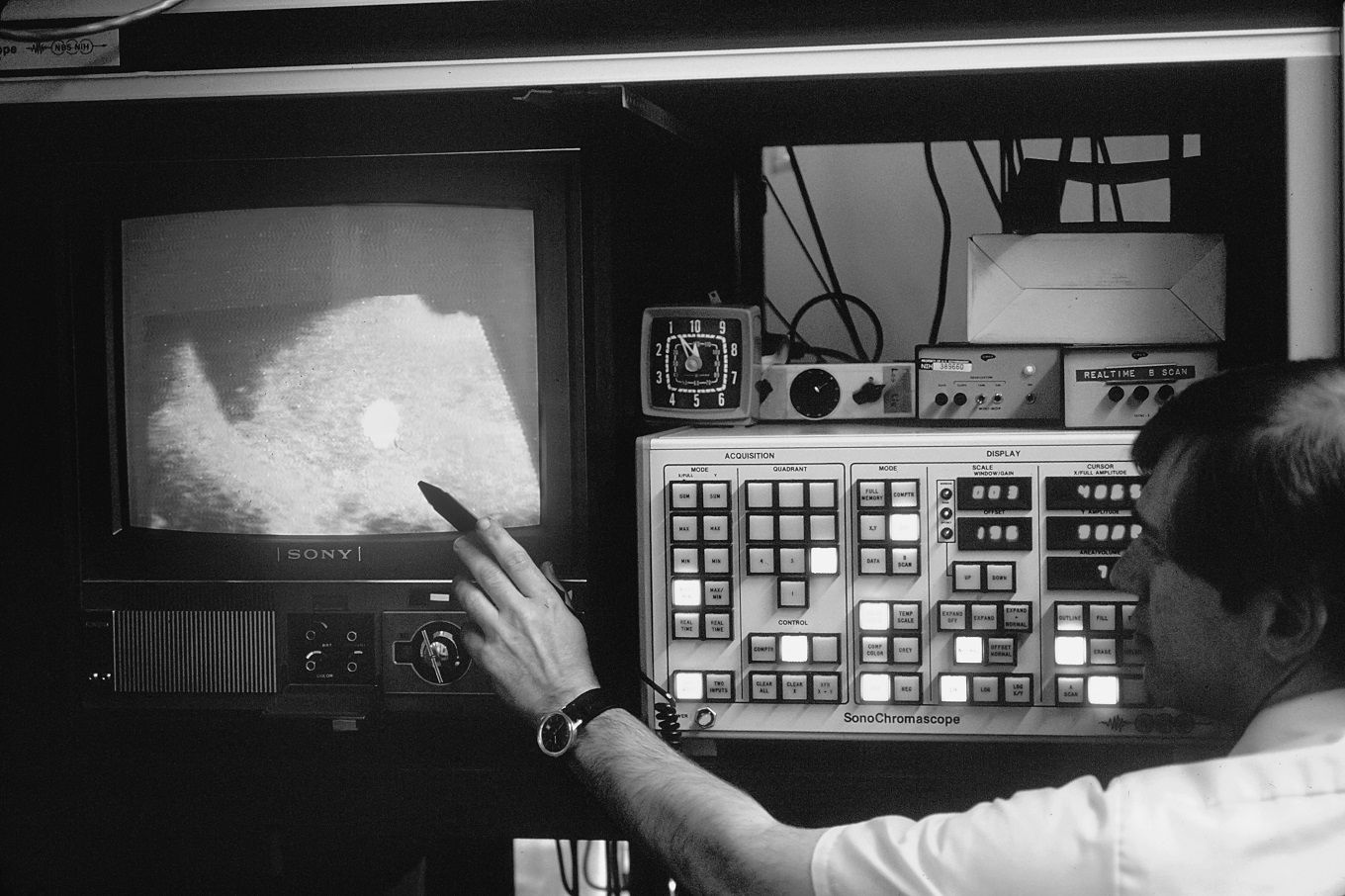- 20 August 2024
- No Comment
- 848
Stunted Futures: The Role of Health Tech in Transforming Lives

Good healthcare is the backbone of a thriving nation. It’s what keeps us healthy, helps us learn and work better, and ultimately, lifts people out of poverty. But here in Pakistan, we’re falling short. Our healthcare spending is shockingly low, only around 1% of our GDP in 2024, and this tiny budget must stretch across a rapidly growing population and the challenges brought on by climate change.
We’re battling on two fronts: infectious diseases like hepatitis, tuberculosis, and malaria, and non-infectious ones like diabetes and heart disease. These health issues are responsible for about 60% of deaths in Pakistan, highlighting just how serious our healthcare problems are.
And what if we told you that in just 15 to 20 years, nearly 40% of our youth, those who should be our country’s future, might be struggling with diabetes, hypertension, or cognitive issues? And all because they didn’t get the proper healthcare when they were kids? It’s a terrifying thought, but it’s the reality we’re facing. Right now, in Pakistan, over 40% of children under five are stunted, according to the National Nutrition Survey 2018. This isn’t just about their height; it’s about a healthcare system that’s failing our children, and our future.
Stunted children often struggle with lower IQs and poor academic performance. This, in turn, limits their future job prospects and financial opportunities, trapping them in a cycle of poverty and underachievement. Stunting is not just a health issue; it’s also an economic one. It reduces our human capital, hindering economic growth and productivity. A study by the Pakistan Institute of Development Economics (PIDE) estimates that poor health and malnutrition, including stunting, costs Pakistan 2-3% of its GDP annually.
On the global stage, Pakistan’s healthcare system is struggling. In 2023, Finland topped the charts with the world’s best healthcare system, scoring 85.9 on the care index. Pakistan, on the other hand, scored a dismal 29.4 lower than many African countries. This score isn’t just a number; it reflects the reality of our crumbling hospitals, lack of funding, and severe shortage of healthcare workers.
Pakistan’s healthcare system is a mix of the public and private sectors, both of which face significant challenges. Public healthcare, now managed by provincial authorities after devolution, struggles with a shortage of healthcare workers and facilities. This is particularly evident in rural areas, where many villages lack basic medical services, forcing residents to travel long distances for treatment. Even in urban areas, overcrowded hospitals and clinics are unable to keep up with the growing demand, leading to overworked staff and a declining quality of care.
With limited access to qualified healthcare, many people turn to unqualified practitioners, exacerbating issues like infectious diseases, maternal health problems, malnutrition, and chronic conditions. The lack of public awareness further complicates the early detection and management of these diseases.
Yet, amid these challenges, there is hope. The integration of health technology offers a promising path forward. By enhancing our medical infrastructure, these innovations can bridge the gap between patients and quality care, leading to continuous improvement in healthcare services. Globally, health tech has shown immense potential. From telemedicine to AI-driven diagnostics, technology is revolutionizing how healthcare is delivered. Countries like the United States, India, and Kenya have successfully integrated health tech into their systems, offering valuable lessons for Pakistan.
innovations can bridge the gap between patients and quality care, leading to continuous improvement in healthcare services. Globally, health tech has shown immense potential. From telemedicine to AI-driven diagnostics, technology is revolutionizing how healthcare is delivered. Countries like the United States, India, and Kenya have successfully integrated health tech into their systems, offering valuable lessons for Pakistan.
Imagine being able to see a doctor without leaving your home. That’s the magic of telemedicine. It connects you with healthcare professionals through video calls, making it easier for those living in remote areas to get medical advice without travelling long distances. This is especially helpful for people who have trouble reaching clinics or hospitals.
Then there’s AI diagnostics. AI, or artificial intelligence, is like having a super-smart assistant that helps doctors by analyzing medical data. It can predict health issues before they become serious, suggest personalized treatment plans, and catch early signs of diseases. This means you get the right care sooner, which can make a huge difference in your health.
Mobile health apps are another game-changer. These apps track your health, from your daily steps to your child’s growth and nutrition. They send alerts if something seems off, so you can act quickly. For parents, these apps can monitor their children’s development and provide advice on maintaining a healthy diet. For example, these platforms can provide remote nutritional guidance to mothers in rural areas, ensuring they have the necessary information and resources for proper prenatal and postnatal care.
Wearable devices are another innovative health tech solution, offering real-time monitoring of vital signs. These devices can alert doctors to any issues before they escalate, allowing for faster, more effective interventions.
However, making health tech a reality in Pakistan won’t be easy. Reliable internet and electricity are crucial for telemedicine and digital health records, and these are often lacking, especially in rural areas. Plus, there’s cultural resistance to consider, older generations may be hesitant to adopt new technologies. That’s why education and awareness campaigns are so important, to help people understand and embrace these innovations.
The road ahead is challenging, but by embracing health tech, we have the opportunity to transform our healthcare system and secure a healthier future for our children and our nation.
Pakistan’s healthcare system is at a critical point. The challenges we face are significant, but with the right technology, we can make real, lasting improvements. If we act now, we can ensure that our children grow up healthy and strong, ready to contribute to our nation’s future. It’s time to prioritize healthcare, for the sake of our children and the generations to come.
Challenges and Potential of Health Tech
Pakistan, a country rich in culture and history, faces significant challenges in its healthcare system. Hospitals are often underfunded and poorly managed, especially government-run hospitals, and lack basic medical equipment, essential supplies, and proper sanitation. These deficiencies result in overcrowded facilities, long wait times, overworked staff, and substandard care. As a result, many who can afford it opt for private treatment, while those with limited resources are left to struggle with poor healthcare facilities.
The root cause of this problem lies in the insufficient healthcare budget. Despite the growing needs of the population, limited funding leads to underfunded hospitals, low salaries for healthcare workers, and a lack of resources to tackle public health issues. This creates inefficiencies, particularly in rural areas where healthcare is already scarce.
However, these challenges also present opportunities for innovation. By integrating health technology, the government can improve the quality of care without requiring significant new investment. Digital health platforms can streamline hospital operations, making resource use more efficient and improving patient outcomes. Additionally, AI and data analytics can help allocate limited resources more effectively, ensuring healthcare services reach those who need them most.
Affordability Challenges in Pakistan’s Healthcare System
One of the biggest challenges to quality healthcare in Pakistan is its high cost. Running a healthcare business is expensive, with high operational costs and costly financing. Small and medium-sized healthcare enterprises (SMEs) struggle to grow because of these financial pressures, preventing them from lowering costs through economies of scale, which could make healthcare more affordable for the average person.
Moreover, the healthcare market in Pakistan suffers from inefficiencies related to high transaction costs, making it even harder for people to access affordable medical services. As a result, many Pakistanis face financial difficulties when seeking quality healthcare.
Solution: How Health Tech Can Lower Healthcare Costs
Health technology offers a promising way to make healthcare more affordable in Pakistan by reducing the reliance on physical healthcare facilities. Digital platforms allow medical services to be delivered online, which helps healthcare providers save on both building costs (CAPEX) and day-to-day operating expenses (OPEX). For instance, advanced technologies like Machine Learning and Artificial Intelligence (AI) are now used to provide telemedicine and diagnostic services, such as reading radiology results and conducting mental health evaluations. This approach not only lowers costs but also makes healthcare more accessible to a wider population.
Challenge: Over-Reliance on Tertiary Care Facilities
Another major challenge in Pakistan’s healthcare system is the heavy dependence on private tertiary care facilities (private clinics). This over-dependence results in high out-of-pocket expenses for patients, which account for 55% of the country’s total healthcare spending. This situation not only creates financial stress for individuals but also puts a significant strain on the overall healthcare system.
Solution: Using Technology to Improve Patient Referrals
Health technology can help set up a better referral system that guides patients to the right level of care, whether it’s a basic check-up, specialized treatment, or hospital care. This approach makes sure patients get the care they need without wasting time or money on unnecessary treatments. By using technology, healthcare providers can easily share patient information, making the referral process smoother, more efficient, and less costly for everyone involved.
Challenge: Limited Access to Health Insurance
Health insurance coverage in Pakistan is below 50%, leaving a large portion of the population without financial protection against medical expenses. This lack of insurance limits access to healthcare services, especially for low-income families.
Solution: AI-Powered Health Insurance
AI technology can change the health insurance industry by helping companies set prices based on actual risks. This makes insurance more accurate and fair, attracting new companies to offer insurance plans. It also supports existing programs like the Sehat Sahulat Program. By making insurance easier to get and more affordable, AI can help more people in Pakistan get the healthcare coverage they need.
Challenge: Managing Healthcare Data
The vast amount of healthcare data generated in Pakistan poses a challenge for data management, particularly given the high costs associated with traditional data storage methods. Efficient data management is crucial for identifying priority areas for healthcare intervention and investment.
Solution: Cloud Computing for Data Management
Cloud computing offers a solution by providing scalable, accessible, and secure data management. This technology can reduce the costs of data storage and improve data interoperability, making it easier for healthcare providers to share information and deliver better care. By leveraging cloud computing, Pakistan’s healthcare system can become more responsive and efficient, leading to improved health outcomes.
Pakistan’s healthcare system faces numerous challenges, including affordability, over-reliance on tertiary care, poor infrastructure in government hospitals, and an insufficient healthcare budget. However, the integration of digital health technologies presents a viable path forward. By leveraging telemedicine, AI, and other digital solutions, Pakistan can address these challenges, enhance the efficiency of its healthcare system, and improve access to quality care for all its citizens. Embracing health tech not only promises to bridge the gaps in the current system but also paves the way for a more resilient and equitable healthcare future.

